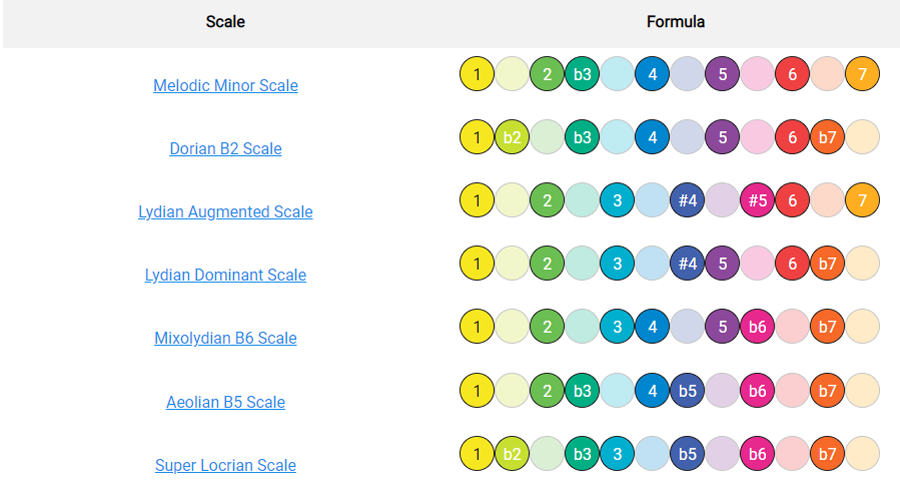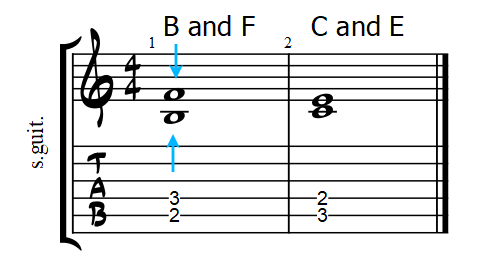Some Curious Facts About Music Theory
Thought-provoking, Exciting, Strange or Simply Interesting Things
 In this post, I'll try to put music theory in a more exciting perspective, showing some interesting and surprising facts related to it.
In this post, I'll try to put music theory in a more exciting perspective, showing some interesting and surprising facts related to it.
Sometimes, people do not like music theory because they view it as a set of hard and fast rules that must be followed to "succeed" in a genre.
They may also feel forced to use particular ideas or techniques to create music.
Or they may feel overwhelmed by the complexity of music theory.
But don't worry, my job here is to simplify things for you.
Learning music theory can help you understand the underlying reason why a piece of music is so and improve your playing.
It can also help you understand teachers, fellow musicians, and/or theory books when they talk about music.
Music theory can also provide a good guide for how music works and why it works the way it does.
The common misconception about music theory is that it is a set of strict rules focused on things like staying in key or using the correct scale, when in fact it is more of a tool that can help musicians understand the music itself.
So please enjoy this series of mind-blowing, surprising, or simply fun facts related to how music works:
There Are Many Chords, But Any Key Has The Same Types
Any major and natural minor key has 3 major chords, 3 minor chords, and 1 diminished chord.
That's the reason why the L trick works on the fretboard;
- The major chords create an L shape (C, F, G in the key of C)
- 3 frets below, the minor chords create another L mirrored shape (Am, Dm, Em)
- The remaining chord is the diminished one (Bdim)
C Major:
C Dm Em F G Am Bdim

The wonderful thing is that this pattern works for any key, as an example here are the chords for the A Major key:
A Bm C#m D E F#m G#dim

A Standard Blues Progressions Changes Key At Each Chord
Think about it.
Blues progressions use dominant chords, which are found the 5th degree of each key.
So A blues progression of E7 A7 B7 is not I IV V but actually V7 (5th chord of the key of A) V7 (5th chord of the key of D) and V7 (5th chord of the key of E).

Resolving Diminished 7th Chords
If you lower any of the four notes composing a diminished 7th chord, you'll always create a 7th dominant chord.
So you, you can resolve a dim7 chord in 4 different ways.
The modulation trick by Jacob Collier is based on this fact:
When you encounter a dim7 chord, flattening any note will take you to a dominant chord.
This provides an opportunity to modulate to a new key, going from that dominant chord to its tonic (V ->I).
As an example, if you have a Fdim7, flattening the G# will make it a G7, which will push you to C major, the "home" chord.
Here's a chart showing the chord tones (dim7: 1, b3, b5 and bb7, dominant: 1, 3, 5, b7).

Resolving Augmented Chords
To resolve an augmented chord, you can shift any of the note up or down by a semitone.
So you have
You Can Build Modes Also On The Melodic And Harmonic Minor Scales
We are used to thinking about names like Lydian, Mixolydian, Dorian, Phrygian, Aeolian, Locrian, and Ionian when talking about modes, which are all derived from the major scale.
But we can build mode also from the Harmonic Minor Scale and the Melodic Minor Scale, which turn out in uncommon names such as Superlocrian bb7, Phrygian Dominant or Lydian Dominant Scale.
Use all these new structures to create new chords, progressions and songs.

Pentatonic On Black Keys
The black keys of the piano are a pentatonic scale.
That's curious!

Lydian And Consecutive Fifths
The Lydian scale is created by stacking consecutive fifths.
Example: C -> G -> D -> A -> E -> B -> F#, which once reordered are the C Lydian Scale: C D E F# G A B C.
12 Notes And 12 Frets
This might sound obvious, but not everybody realizes that the 12 notes of the musical alphabet lie on the first 12 frets of the neck.
If you grasp this concept, mastering fretboard geometry and learning chord and scales construction will be easier.

The Tritone Is The Signature Of The Key
The tritone interval formed by the 4th and the 7th identifies uniquely a key because it's the only a tritone interval is present in that key.
That same interval is only present in the dominant chord (5th degree) of that key.

Example in the key of C:
C(1) D(2) E(3) F(4) G(5) A(6) B(7)
Tritone 4-7: F-B
Dominant Chord: G7 (G B D F)
Melody Creates Harmony
It's perfectly possible to express harmonic progression without playing any chords.
It is the listener that infers chord qualities when it's not present.
Strategies such as chord tones melodies, or scalar motion, are useful to create harmony even when there are no chords.
A great example is the power chord, which is formed by the root and the fifth.
Not having the 3rd and the 7th, its quality and function are not defined, but the listeners, even without musical training, can naturally infer the chord's characteristics and enjoy the music without the feeling that something is incomplete.

BPM Depends On Your Limbs Length
Ethnomusicologists have discovered that the average tempo of the heritage music of a tribe is directly related to the average size of its population.
For example, Pygmy music is a lot faster than Watussi music.
Why?
The Watussi population is way taller than Pygmy, so, having longer limbs, it takes longer to swing to and from while dancing.
On the other side, Pygmy are short and this turns out in fast and frenetic music.
A Single Note Is Not A Single Note Actually
Have you ever heard (of) overtones? (no pun intended)
Overtones are additional frequencies that are present when a note is played, in addition to the fundamental frequency.
They are created by the complex vibration of the string and follow the harmonic series.
They contribute to the overall sound of the note and help to create a fuller, richer sound.

A sound without overtones can have a very simple, almost "beep-like" quality, and lacks the complexity and richness of a sound with harmonics.
The overtones played when you play a C are the root, then eventually the perfect fifth, major third, flat seventh, major second, etc.
In music production, sounds with overtones are generally preferred, as they are more interesting and pleasing to the ear, and can add depth, character, and richness to a mix.
Check this video at 3m 17s to listen to this concept.
Overtones are related to chord theory because the notes that make up a chord are typically based on the fundamental frequency and its overtones.
That's awesome!
The Pentatonic Scale Is Printed On Our Brain
This famous presentation by Bobby McFerrin shows how the pentatonic scale has the equal effects on audiences from anywhere in the world and in any culture.
It's like e common code of shared human experience.
"It's an exploration of what constitutes a "musical" sound -- all notes are just tones of a certain frequency, yet our minds find certain sequences of tones more aurally pleasing than others.
If you play a certain note or a certain couple of notes, your mind will want to fill the next one in predictably. It's the scientific pursuit of why we consider certain things to be beautiful, and why certain sequences are embedded in our brains."
Well, hope you found some food for thought in these words.
To stay updated on new articles, subscribe here.